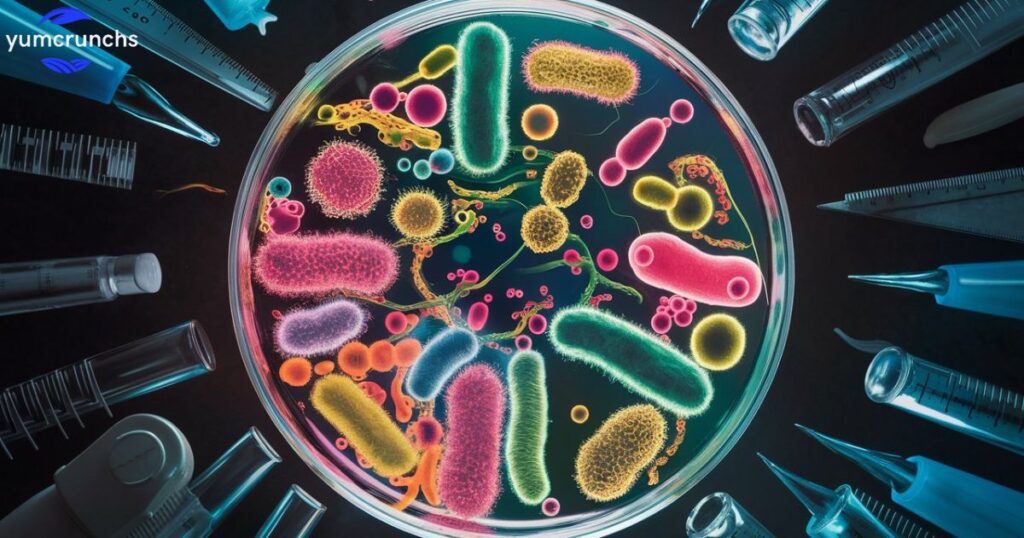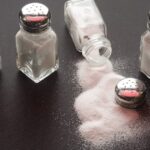Bacterial growth in food is a crucial concern for ensuring food safety. Understanding which food items are ideal for bacterial growth is essential for maintaining good health. Certain factors such as moisture content, pH level, and nutrient availability influence bacterial growth in food.
Have you ever wondered why some foods spoil faster than others do? The answer lies in their composition and how conducive they are to bacterial growth. Identifying which food items are more prone to bacterial proliferation can help us make informed choices about food storage and consumption.
Foods with high moisture content, such as meats, dairy products, and cooked grains, provide an ideal environment for bacterial growth. Additionally, foods with a neutral pH level, like poultry and seafood, can also promote bacterial proliferation. Proper storage and handling practices are crucial to prevent foodborne illnesses associated with these foods.
What foods are good for growing bacteria?
Certain foods provide an ideal environment for bacteria to thrive and multiply. Foods that are high in moisture, protein, and carbohydrates are particularly conducive to bacterial growth. Examples include meat, poultry, fish, dairy products, eggs, cooked rice, and cooked pasta. These foods provide nutrients that bacteria need to reproduce rapidly.
To prevent the growth of harmful bacteria, it is important to store and handle these foods properly. Refrigeration, cooking to appropriate temperatures, and practicing good hygiene when preparing and serving food can help reduce the risk of foodborne illness.
Which Food Best Supports the Growth of Bacteria?
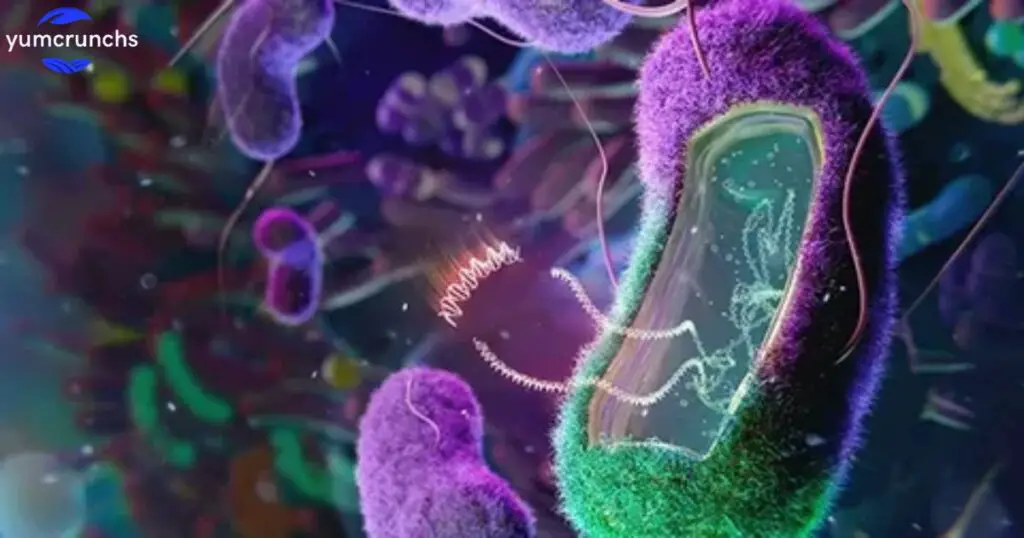
Certain foods create an ideal environment for bacteria to thrive and multiply rapidly. Among these, perishable foods like meat, poultry, seafood, eggs, and dairy products are prime candidates. These foods provide ample moisture, nutrients, and protein, which bacteria need to grow. Additionally, foods that are left at room temperature for extended periods, such as cooked rice or pasta, also foster bacterial growth.
To minimize the risk of bacterial growth, it is crucial to store perishable foods properly, in either the refrigerator or freezer and to cook them thoroughly before consumption. Additionally, practicing good hygiene, such as washing hands and surfaces frequently, can help reduce the spread of harmful bacteria in the kitchen and beyond.
A Food Handler Notices a Nest Made of Scraps of Paper and Grass
A food handler notices a nest made of scraps of paper and grass in the corner of the kitchen. Concerned about hygiene, they immediately inform their supervisor. The supervisor takes quick action, calling in pest control to investigate and remove the nest safely. This proactive approach ensures the kitchen remains clean and safe for food preparation, preventing any potential contamination.
Following the removal of the nest, the food handler and their team conduct a thorough inspection of the kitchen to ensure no other signs of pests are present. They reinforce cleanliness protocols and implement measures to prevent future infestations, including during the preparation of Ayurveda-dinner. By staying vigilant and taking prompt action, they uphold the highest standards of food safety and maintain a healthy environment for both staff and customers.
Which Food Item is Ideal for Bacterial Growth Serv
Bacterial growth is greatly influenced by the type of food we consume. Certain foods provide an ideal environment for bacteria to thrive, posing health risks if not handled or stored properly. Among these, perishable items like meats, dairy products, and eggs are particularly prone to bacterial growth. These foods are rich in nutrients that bacteria need to multiply rapidly. When left at temperatures between 40°F and 140°F (4°C to 60°C), known as the “danger zone,” bacteria can proliferate quickly, increasing the risk of foodborne illnesses.
In contrast, foods with high acidity or low moisture content, such as pickles, jams, and dried fruits, are less favorable for bacterial growth. These conditions create an environment where bacteria struggle to survive and reproduce. Therefore, it is crucial to handle and store perishable foods properly, refrigerating them promptly and ensuring they are cooked thoroughly to kill any harmful bacteria present. By being mindful of food safety practices, we can minimize the risk of bacterial contamination and enjoy our meals safely.
Which Item Does Not Have a Food-Contact Surface

When handling food, it is crucial to ensure that only items with food-contact surfaces come into direct contact with the food. This helps maintain food safety and prevents contamination. One important question to ask is, “Which item does not have a food-contact surface?” By identifying these items, we can effectively separate them from food-handling areas.
Non-food contact items include equipment such as shelves, storage containers, and cleaning supplies. These items play essential roles in food preparation and storage but do not directly touch the food. By keeping them separate from food-contact surfaces, we reduce the risk of cross-contamination and uphold high standards of hygiene in food handling environments. Identifying and distinguishing between items with and without food-contact surfaces is a fundamental practice in ensuring food safety and protecting consumer health.
What is The Main Cause of Food Contamination
Food contamination occurs when harmful pathogens or chemicals are introduced into food, making it unsafe to consume. The main cause of food contamination is poor hygiene practices during food handling and preparation. This can include improper handwashing, cross-contamination between raw and cooked foods, and using contaminated utensils or surfaces. Additionally, food can become contaminated during processing, transportation, or storage if proper hygiene and safety measures are not followed.
Another significant cause of food contamination is inadequate cooking or improper temperature control. Insufficient cooking temperatures may not kill harmful bacteria like E. coli or Salmonella, allowing them to thrive in the food. Likewise, if food is not stored at the correct temperature, bacteria can multiply rapidly, leading to contamination. It is crucial to cook food thoroughly and store it at the appropriate temperature to prevent foodborne illnesses caused by contamination.
Which Food is Stored Correctly
Storing food correctly is crucial to maintaining its freshness and safety. Firstly, perishable items like meat, dairy, and produce should be kept in the refrigerator to slow down bacterial growth. Make sure to store meat on the bottom shelf to prevent juices from dripping onto other foods. Additionally, leftovers should be promptly refrigerated in shallow containers to cool them quickly and reduce the risk of bacteria multiplying.
For non-perishable items like canned goods and dry goods, it is essential to store them in a cool, dry place away from direct sunlight. How To Keep Your Home Clean Of Bacteria And Mold This helps preserve their quality and prevents spoilage. Be sure to check expiration dates regularly and rotate items to use older ones first. By following these simple guidelines, you can ensure that your food stays fresh and safe for consumption.
Which Must Be cleaned But Not Sanitized
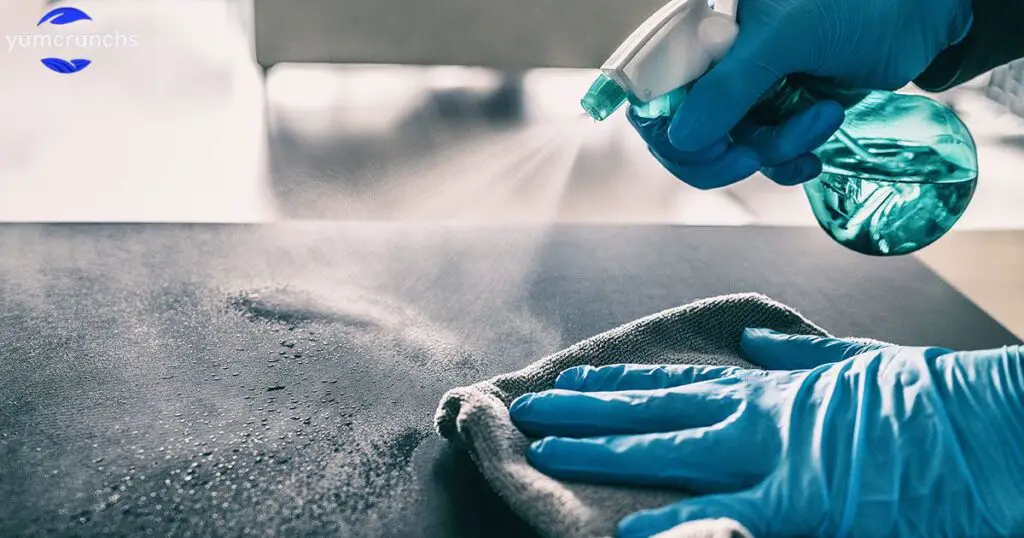
When it comes to ensuring hygiene and safety, understanding the difference between cleaning and sanitizing is crucial. Cleaning involves removing dirt, dust, and debris from surfaces while sanitizing goes a step further by killing germs and bacteria. However, there are certain items where cleaning is necessary but sanitizing may not be appropriate.
Some objects, like certain types of wood or delicate fabrics, cannot withstand the harsh chemicals used in sanitizing solutions. In such cases, thorough cleaning with gentle detergents or soaps is essential to remove dirt and stains without compromising the integrity of the material. This ensures cleanliness without risking damage or contamination from inadequate sanitizing methods. Therefore, understanding the specific needs of each item is key to maintaining cleanliness effectively.
Bacterial Growth in Food
Bacterial growth in food can lead to foodborne illnesses. Harmful bacteria multiply rapidly in certain conditions. Moisture, warmth, and nutrients create ideal breeding grounds for bacteria. Contaminated food can cause sickness if consumed. Proper storage and handling can prevent bacterial growth. Cooking food thoroughly kills harmful bacteria effectively.
Keep perishable foods refrigerated below 40°F (4°C). Store raw meats separately from other foods to avoid cross-contamination. Wash hands and surfaces often when handling food. Use clean utensils and cutting boards to prevent bacterial contamination. Discard any food that smells or looks off. Following food safety guidelines reduces the risk of bacterial growth.
PH Requirements for Bacterial Growth
Bacterial growth hinges on specific pH conditions. PH measures acidity or alkalinity. Bacteria often thrive in neutral to slightly acidic environments. Extreme pH levels can hinder bacterial growth significantly. Certain bacteria prefer acidic conditions for optimal growth rates. Conversely, alkaline environments may inhibit bacterial proliferation.
Maintaining pH balance is crucial for bacterial cultures. Variations in pH impact bacterial metabolism. Acidic conditions slow down bacterial growth rates. Alkaline environments can disrupt bacterial cellular processes. Hence, understanding pH requirements is vital for successful bacterial cultivation. PH regulation ensures favorable conditions for bacterial proliferation.
Effects of pH on Bacterial Growth
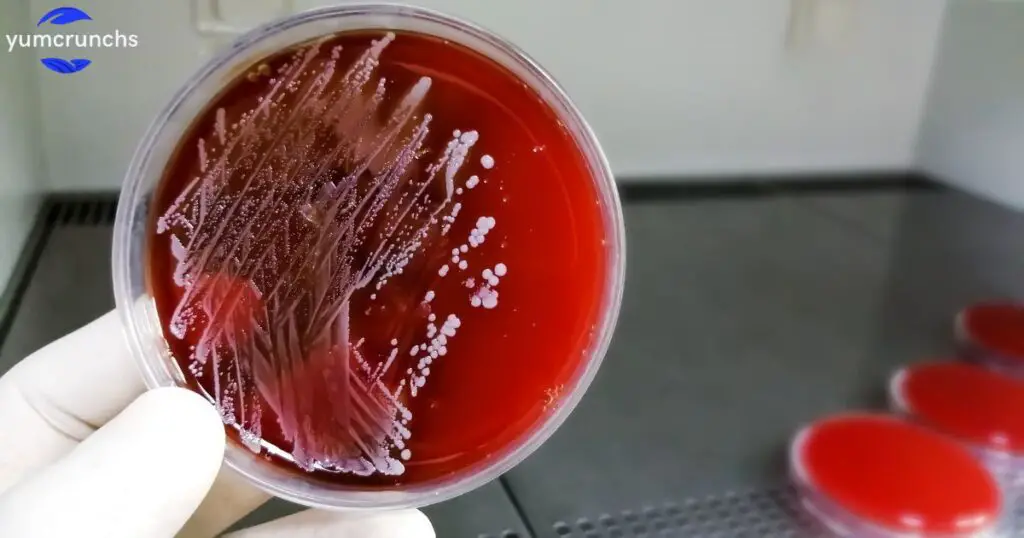
The pH level, which measures how acidic or basic a solution is, plays a crucial role in determining the growth of bacteria. Bacteria have specific pH ranges in which they thrive, and deviations from these ranges can affect their growth significantly. Generally, most bacteria prefer neutral to slightly acidic conditions, with a pH range of around 6.5 to 7.5. However, some bacteria, such as acidophilic bacteria, prefer acidic environments, while others, like alkaliphilic bacteria, thrive in alkaline conditions.
When the pH of the environment shifts outside the optimal range for a particular bacterial species, it can impact their growth and reproduction. Extreme pH levels can denature proteins and disrupt essential cellular processes, leading to decreased growth rates or even cell death. For example, highly acidic conditions can damage bacterial cell membranes and interfere with nutrient uptake, while highly alkaline conditions can disrupt enzyme activity. Therefore, understanding the effects of pH on bacterial growth is crucial for various fields, including microbiology, food preservation, and environmental science.
Neutrophiles
Neutrophils play a vital role in combating bacterial growth within the body. These white blood cells swiftly move to sites of infection. They engulf and destroy bacteria through a process called phagocytosis. By neutralizing bacteria, neutrophils help prevent infections from spreading.
However, bacteria have evolved mechanisms to evade neutrophil attacks. Some bacteria produce toxins that can impair neutrophil function. Others form biofilms, making it difficult for neutrophils to reach and eliminate them. Despite these challenges, neutrophils remain crucial defenders against bacterial infections.
Optimum Growth PH
The optimum growth pH for bacterial growth is crucial. Bacteria thrive within specific pH ranges for optimal growth. Different bacterial species have distinct pH preferences for growth. Monitoring pH levels aids in controlling bacterial growth effectively. Adjusting pH can hinder or promote bacterial proliferation in environments.
Understanding optimum growth pH guides bacterial cultivation practices. Maintaining ideal pH conditions fosters bacterial growth and reproduction. Extremes in pH can inhibit bacterial metabolism and reproduction. PH manipulation is a key strategy in various industries.
Minimum and Maximum Growth pH
Microorganisms have specific pH ranges for optimal growth conditions. The minimum growth pH represents the lowest pH level permitting growth. Conversely, the maximum growth pH denotes the highest pH allowing growth. Microbes thrive within these pH boundaries for optimal development. Outside these ranges, growth rates decline or cease altogether. PH regulation is crucial for maintaining microbial ecosystems.
In summary, minimum and maximum growth pH, define microbial growth limits. These ranges determine optimal conditions for microbial proliferation. Understanding these boundaries aids in controlling microbial environments effectively.
Acidophilus and Alkaliphiles
Acidophiles and alkaliphiles are two types of extremophiles, organisms that thrive in extreme environments. Acidophiles are microorganisms that flourish in acidic conditions, typically with a pH level below 3. These organisms have adapted unique biochemical mechanisms to withstand the high concentration of hydrogen ions. They are often found in environments such as acidic hot springs, acid mine drainage, and acidic soils.
On the other hand, alkaliphiles are microorganisms that thrive in alkaline environments, usually with a pH level above 9. These organisms have evolved specialized enzymes and membrane structures to survive and reproduce in such extreme conditions. Alkaliphiles can be found in places like soda lakes, alkaline soils, and alkaline hydrothermal vents. Understanding the adaptations of acidophiles and alkaliphiles provides insights into the diversity of life on Earth and offers potential applications in biotechnology and environmental remediation.
Acidophiles and Alkaliphiles
Acidophiles and alkaliphiles are two types of bacteria that thrive in extreme pH conditions. Acidophiles are bacteria that prefer acidic environments, with pH levels typically below three. They are often found in places like acidic soils, volcanic areas, and acidic water bodies such as hot springs. These bacteria have adapted to survive and grow in these harsh conditions by developing unique mechanisms to maintain their internal pH balance.
On the other hand, alkaliphiles are bacteria that thrive in alkaline environments, with pH levels typically above nine. They are commonly found in habitats like alkaline lakes, soda lakes, and alkaline soils. Alkaliphiles have evolved specialized enzymes and membrane transport systems to cope with the high pH conditions, allowing them to carry out essential cellular processes and flourish in their alkaline habitats. Overall, acidophiles and alkaliphiles demonstrate the remarkable ability of bacteria to adapt and thrive in diverse and extreme environments.
Which food item is ideal for bacterial growth tortilla chips chili peppers jar salsa or sour cream?
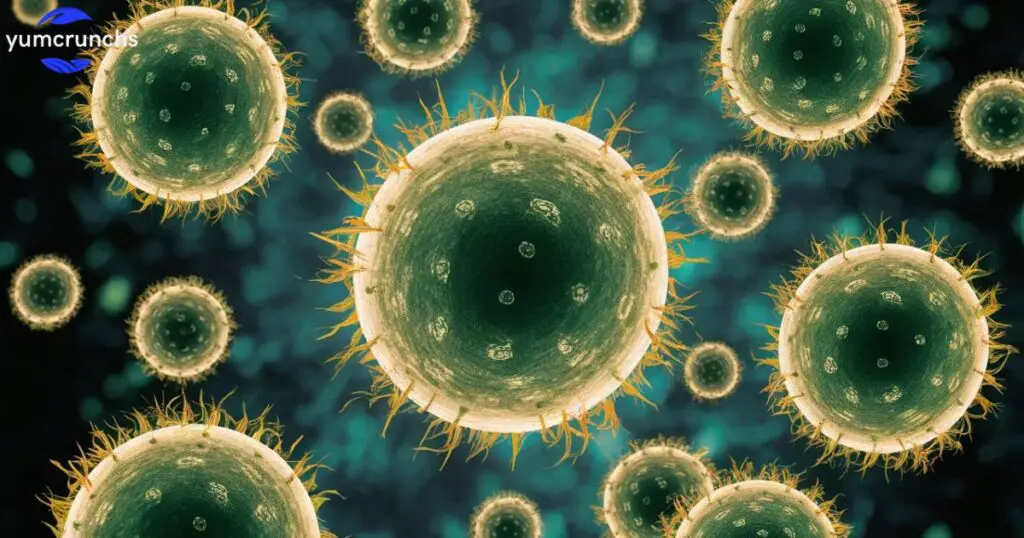
Among the options listed, sour cream is the most ideal food item for bacterial growth. Sour cream is a dairy product with high moisture content and a relatively neutral pH, creating favorable conditions for bacterial growth. When stored improperly or exposed to warm temperatures, bacteria such as Listeria, Salmonella, and E. coli can multiply rapidly in sour cream, potentially causing foodborne illnesses if consumed.
On the other hand, tortilla chips, chili peppers, jar salsa, and chili peppers are less conducive to bacterial growth compared to sour cream. These items typically have lower moisture content and higher acidity, which inhibits the growth of bacteria. However, it is essential to handle all food items safely and store them at appropriate temperatures to minimize the risk of contamination and foodborne illness.
FAQ’s
Which food items are ideal for bacterial growth?
Foods with high moisture content, such as dairy products (like milk and cheese), cooked grains, and meats, are ideal for bacterial growth.
Why are high moisture content foods prone to bacterial growth?
Bacteria thrive in environments with moisture, as it provides the necessary conditions for their reproduction and metabolism, leading to rapid growth and proliferation.
How can I prevent bacterial growth in food?
Store perishable foods properly in the refrigerator, cook foods to their recommended internal temperatures, and avoid leaving food at room temperature for extended periods to minimize bacterial growth and the risk of foodborne illness.
Conclusion
In conclusion, understanding which food item is ideal for bacterial growth is crucial for maintaining food safety. We have explored various factors like moisture content, pH level, and nutrient density that contribute to bacterial proliferation. By being mindful of these factors, we can make informed choices to prevent foodborne illnesses.
As you reflect on the significance of these insights, consider how they apply to your daily habits in the kitchen. Are there adjustments you could make to minimize the risk of bacterial contamination in your meals? Think about the last time you prepared food—did you consider these factors?
Remember, a little awareness can go a long way in safeguarding your health and that of your loved ones. Therefore, as you go about your culinary endeavors keep these principles in mind and stay vigilant against the unseen threats that may lurk in our food.

Daniel, a seasoned author with 8 years of expertise in SEO, brings a delectable blend of culinary flair and digital finesse to the food niche on his website.

